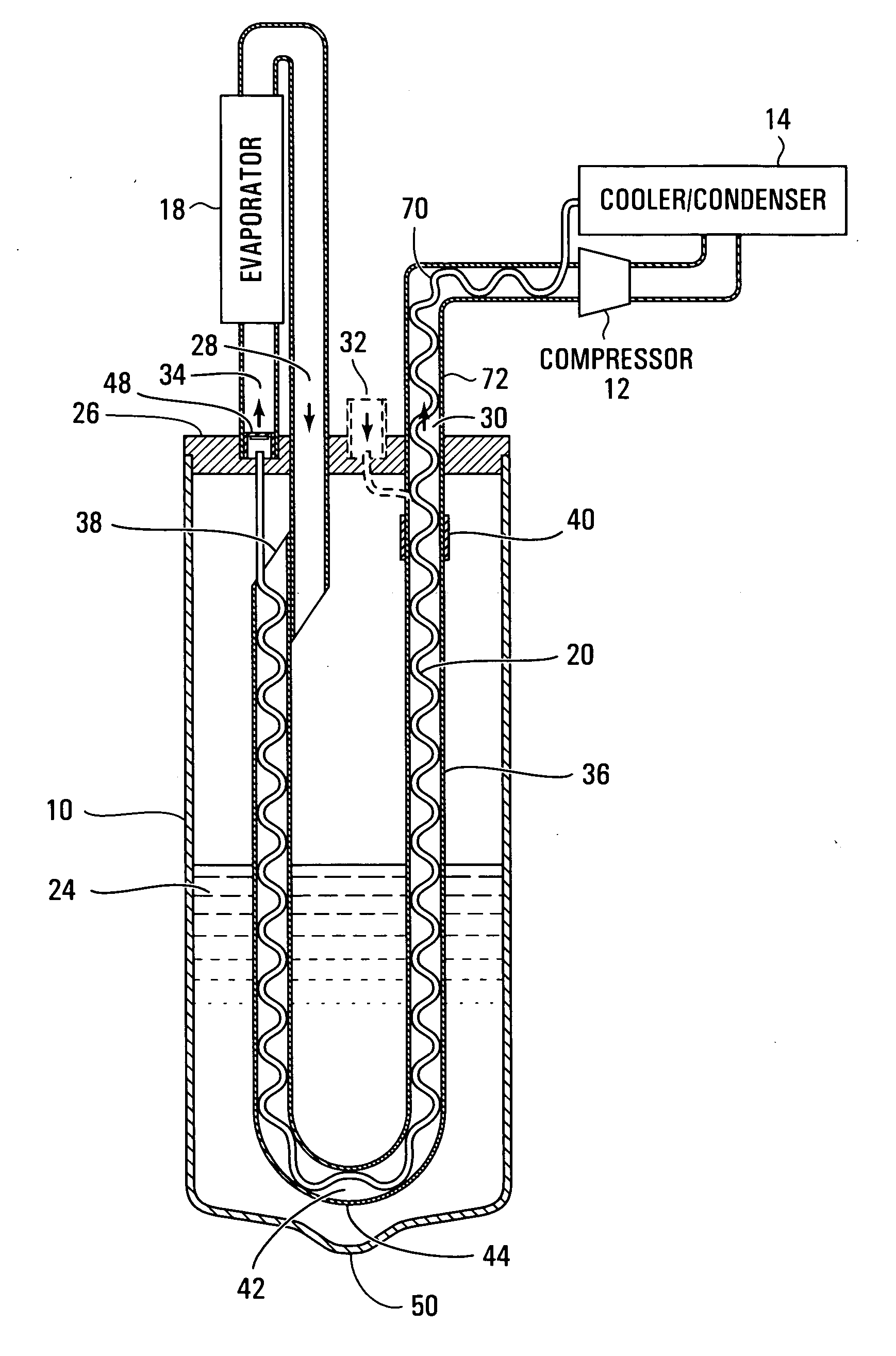Refrigeration system
a refrigeration system and refrigeration technology, applied in the field of refrigeration systems, can solve the problems of not being able to evaporate all liquid, affecting the efficiency of compressors, so as to increase the system cop, reduce the loss of the system to the external environment, and increase the specific cooling capacity.
- Summary
- Abstract
- Description
- Claims
- Application Information
AI Technical Summary
Benefits of technology
Problems solved by technology
Method used
Image
Examples
Embodiment Construction
[0054] In a conventional air-conditioning system 5 of FIG. 1, liquid refrigerant is stored in an accumulator 11 to be drawn in gaseous-liquid two-phase form to the inlet of a compressor 12. The compressor 12 delivers high temperature—high pressure refrigerant gas (i.e. substantially higher than ambient) to a condenser / gas cooler 14 where the gas is cooled and / or typically partially converted to a liquid form. Refrigerant fluid from the condenser 14 (still under high pressure) is expanded to a lower pressure through an expansion device 22, thereby undergoing a rapid drop in temperature; the low temperature low pressure fluid is then evaporated in an evaporator 18 from where it is returned to the accumulator 11 in a mixed flow of liquid and gas. Depending upon the loading of the system, more or less refrigerant fluid is condensed and evaporated; refrigerant that is in excess of the instantaneous requirements of the system is stored in liquid form in the accumulator 11. The compressor,...
PUM
 Login to View More
Login to View More Abstract
Description
Claims
Application Information
 Login to View More
Login to View More - R&D
- Intellectual Property
- Life Sciences
- Materials
- Tech Scout
- Unparalleled Data Quality
- Higher Quality Content
- 60% Fewer Hallucinations
Browse by: Latest US Patents, China's latest patents, Technical Efficacy Thesaurus, Application Domain, Technology Topic, Popular Technical Reports.
© 2025 PatSnap. All rights reserved.Legal|Privacy policy|Modern Slavery Act Transparency Statement|Sitemap|About US| Contact US: help@patsnap.com



